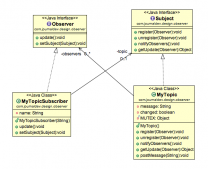本文实例讲述了Java实现url加密处理的方法。分享给大家供大家参考,具体如下:
|
1
2
3
4
5
6
7
8
9
10
11
12
13
14
15
16
17
18
19
20
21
22
23
24
25
26
27
28
29
30
31
32
33
34
35
36
37
38
39
40
41
42
43
44
45
46
47
48
49
50
51
52
53
54
55
56
57
58
59
60
61
62
63
64
65
66
67
68
69
70
71
72
73
74
75
76
77
78
79
80
81
82
83
84
85
86
87
88
89
90
91
92
93
94
95
96
97
98
99
100
101
102
103
104
105
106
107
108
109
110
111
112
113
114
115
116
117
118
|
package test;import java.security.Key;import java.security.SecureRandom;import javax.crypto.Cipher;import javax.crypto.KeyGenerator;import sun.misc.BASE64Decoder;import sun.misc.BASE64Encoder;public class ThreeDES { public static String crypt(String content,String password,int i){ try { KeyGenerator generator = KeyGenerator.getInstance("AES"); generator.init(new SecureRandom(password.getBytes())); Key key = generator.generateKey(); generator = null; if(i == 1){ return getEncString(content,key); } else if(i == 2){ return getDesString(content,key); } } catch (Exception e) { return null; } return null; } /** * 加密String明文输入,String密文输出 * * @param strMing * @return */ private static String getEncString(String strMing,Key key) { byte[] byteMi = null; byte[] byteMing = null; String strMi = ""; BASE64Encoder base64en = new BASE64Encoder(); try { byteMing = strMing.getBytes("UTF8"); byteMi = getEncCode(byteMing,key); strMi = base64en.encode(byteMi); } catch (Exception e) { e.printStackTrace(); } finally { base64en = null; byteMing = null; byteMi = null; } return strMi; } /** * 解密 以String密文输入,String明文输出 * * @param strMi * @return */ private static String getDesString(String strMi, Key key) { BASE64Decoder base64De = new BASE64Decoder(); byte[] byteMing = null; byte[] byteMi = null; String strMing = ""; try { byteMi = base64De.decodeBuffer(strMi); byteMing = getDesCode(byteMi,key); strMing = new String(byteMing, "UTF8"); } catch (Exception e) { e.printStackTrace(); } finally { base64De = null; byteMing = null; byteMi = null; } return strMing; } /** * 加密以byte[]明文输入,byte[]密文输出 * * @param byteS * @return */ private static byte[] getEncCode(byte[] byteS,Key key) { byte[] byteFina = null; Cipher cipher; try { cipher = Cipher.getInstance("AES"); cipher.init(Cipher.ENCRYPT_MODE, key); byteFina = cipher.doFinal(byteS); } catch (Exception e) { e.printStackTrace(); } finally { cipher = null; } return byteFina; } /** * 解密以byte[]密文输入,以byte[]明文输出 * * @param byteD * @return */ private static byte[] getDesCode(byte[] byteD,Key key) { Cipher cipher; byte[] byteFina = null; try { cipher = Cipher.getInstance("AES"); cipher.init(Cipher.DECRYPT_MODE, key); byteFina = cipher.doFinal(byteD); } catch (Exception e) { e.printStackTrace(); } finally { cipher = null; } return byteFina; } public static void main(String[] args) { System.out.println(ThreeDES.crypt("bindMobile=13023130171&fenjihao=107", "bbbbb", 1)); System.out.println(ThreeDES.crypt("GT+F0fcFNGiq73/+FaX9pK9n9zqxwqz9sZ7MQdSp1BxWJXWn7EwnvniQpAOaGi0W", "bbbbb", 2)); }} |
希望本文所述对大家java程序设计有所帮助。
















